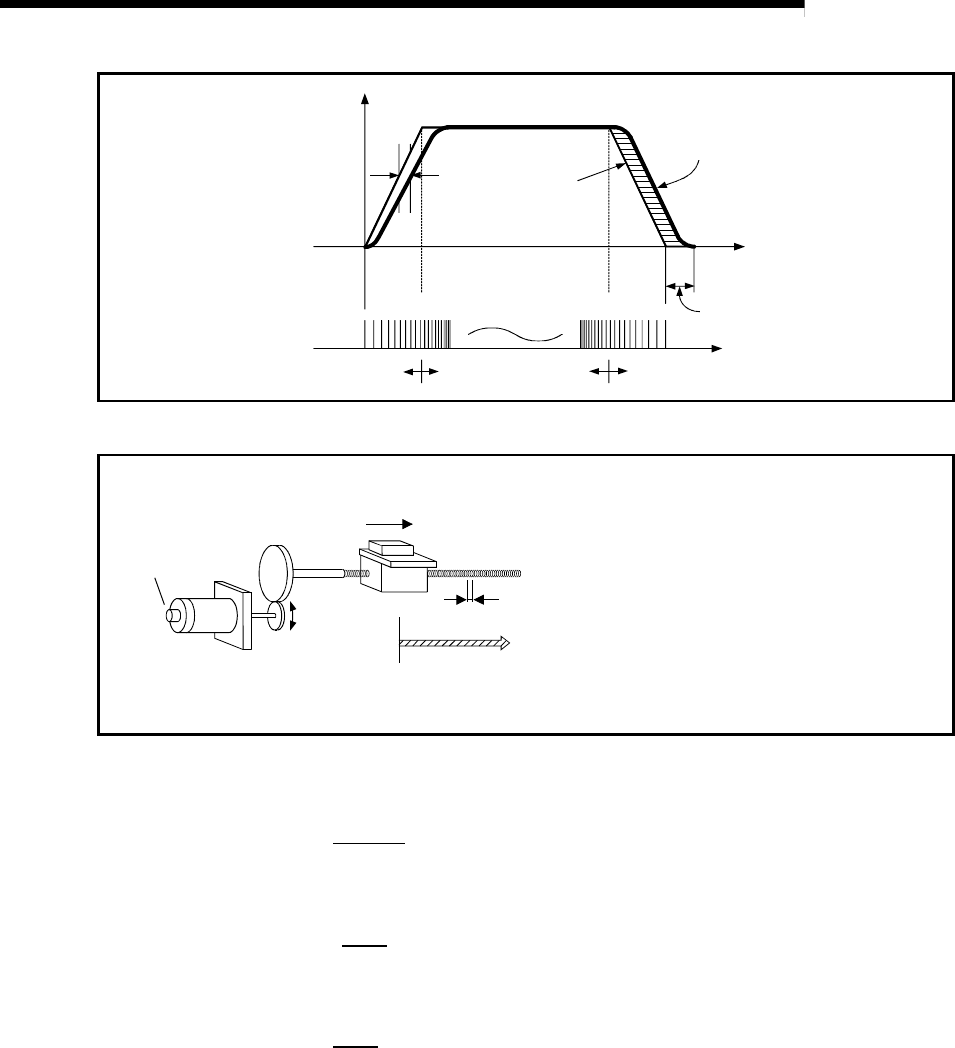
1 - 9
MELSEC-
1 PRODUCT OUTLINE
Speed V Pulse droop
amount
Pulse
distribution
Servomotor
speed
Accel-
eration
Decel-
eration
Time t
Stop
settling time
Pulse train Rough Dense Rough
Fig. 1.3 D75P2 output pulses
V
R
L
P0
P
Pulse encode
(PLG)
Workpiece
Worm gea
Table
Servomotor
A : Movement amount per pulse (mm/pulse)
Vs : Command pulse frequency (pulse/s)
n : Pulse encoder resolution (pulse/rev)
L : Worm gear lead (mm/rev)
R : Deceleration ratio
V : Movable section speed (mm/s)
N : Motor speed (r/min)
K : Position loop gain (1/s)
: Deviation counter droop pulse amount
P0 : Zero point (pulse)
P : Address (pulse)
Fig. 1.4 System using worm gears
(1)
Movement amount per pulse
A =
L
[mm/pulse]
R
n
(2) Command pulse frequency
Vs =
V
[pulse/s]
A
(3) Deviation counter droop pulse amount
=
Vs
[pulse]
K
The movement amount per pulse is indicated with (1), and the [No. of output pulses]
[
movement amount per pulse] is the movement amount. The command pulse frequency is
calculated with (2) using the movable section speed and
movement amount per pulse.
The relation of the command pulse frequency and deviation counter droop pulses is
shown in (3).
As the positioning command
unit, (mm), (inch), (degree) or (pulse) can be selected
independently for the 1 to 2 axes of the D75P2.
Thus, if the data such as the movement amount per pulse, acceleration/deceleration
time, positioning speed, and positioning address are set to match the positioning
command unit, the operation will be carried out within the D75P2 for the target
positioning address. The pulse train will be output, and positioning will be executed.
